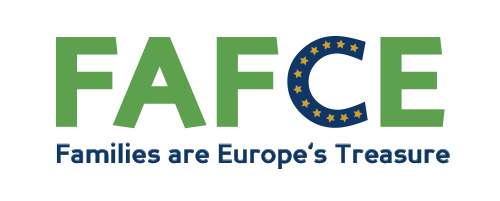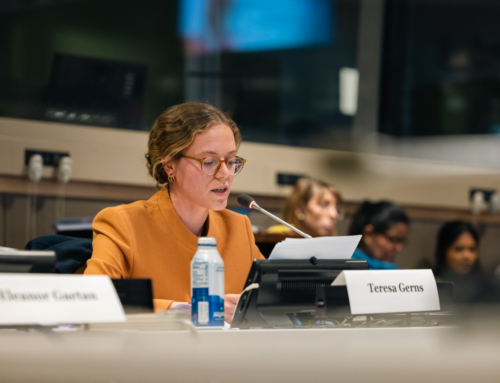25 August 2021,
Pornography often pretends to be confined to the hidden secret of sexual fantasies. However, even if hidden, pornography heavily impacts a person’s relations with its family, its peers, its community and the entire society overall. The current demographic winter in Europe demonstrates a shift from the true wealth of society – family and children – to the promotion of individualistic short-term happiness. The consumption of pornography is a striking symptom of this change.
The impact of pornography on the individual level is starting to be widely documented. The effects of porn consumption are numerous. It is to begin with a perverse and counterproductive form of sexual education for children and adolescents, who will develop unrealistic, emotionally detached and often violent expectations of sexuality.[1] Pornography is equally problematic for adults, both men and women, with addiction to pornography having disastrous consequences on the psychological balance of its consumers.[2] It also impacts couples, as it rejects the notions of consent, monogamy, stability and occults the profound connection of sexuality with the dignity of human procreation.[3] Moreover, pornography is not only a problem for those who view it, but also a violation of the human dignity of those who participate in it, as the working conditions of porn actors include degrading treatments.[4] More seriously, the porn industry profits from the diffusion of the worst crimes – rape, torture, child abuse – while promoting in a diffuse way a culture of rape, male dominance and sexual selfishness.[5]
However, besides acknowledging the harm that pornography inflicts on the interpersonal relationships, few people consider pornography’s effect on the community, as for example the impact of pornography on demography and the decrease in birth rate. This question was raised early this year in an article of Auguste Meyrat on “The Pornification of Society”.
The unprecedented scale of consumption of pornography by both men and women needs more attention: as for today, porn is one of the top researches online.[6] Therefore, even if the level of impact of pornography at the individual level can be discussed, the fact that porn consumption is so widespread implies that its negative impacts are multiplied with the number of consumers.
Subtle effects of porn consumption such as a reluctance to commit to a relationship will thus multiply into entire generations unwilling to enter or stay into stable relationships based on fidelity and monogamy. Since a stable relationship is one of the first basis to start a family, porn consumption thus impacts the wish to have children. Although the impact of porn consumption in the decrease of fertility in Europe is still yet to be assessed, it most certainly constitutes an explanatory element within a general explanation of an individualist society based on immediate wellbeing, comfort and satisfaction that dissuades to enter in a relation of responsibility with a child.
“Pornography destroys human drive. Compared to pulling out one’s phone and watching titillating videos, taking a person out and having a conversation is difficult and uninteresting. Compared to the easy pleasure of pornography, the lasting pleasure of a happy marriage or even a job well-done is relatively pointless. Compared to the stress-free satisfaction of virtual sex, the hard-won satisfaction of raising children and building a business is unrealistic”.
With pornography, sexuality is no longer something you do together, and is definitely disconnected from the openness to life. It promotes a society of instant enjoyment and comfort rather than a society that generates life and accepts the joyful responsibility of caring for children, who are the treasure for a dynamic and sustainable society. As stated by Auguste Meyrat, pornography “has effectively sterilized whole generations of men who now lack the initiative to marry and have children”. More profound perhaps is also the loneliness experimented by porn viewers. Only relationships of friendship, love and support can help to overcome an addiction to pornography. The support of a community becomes then a deeper cure for a disease of which pornography is only a symptom: loneliness.
[1] Chiara Sabina, Janis Wolak, and David Finkelhor, “The Nature and Dynamics of Internet Pornography Exposure for Youth,” CyberPsychology & Behavior 11, no. 6 (2008):691–693.
Chyng Sun, Ana Bridges, Jennifer Johnson, and Matt Ezzell, “Pornography and the Male Sexual Script: An Analysis of Consumption and Sexual Relations,” Archives of Sexual Behavior 45, no. 4 (May, 2016): 983–94.
Barna Group, “The Porn Phenomenon: The Impact of Pornography in the Digital Age” (2016).
Jay N. Giedd, “The Amazing Teen Brain,” Scientific American (June 2015) 32–37.
Le Roux, “Pornography: Human Right or Human Rights Violation?” Open Journals Publishing (2009), available at https://www.researchgate.net/publication/262545053_Pornography_Human_right_or_human_rights_violation
Elizabeth M. Morgan, “Associations between Young Adults’ Use of Sexually Explicit Materials and Their Sexual Preference, Behaviors, and Satisfaction,” The Journal of Sex Research 48, no. 6 (2011): 520– 530.
[2] E. M. Morgan, “Associations Between Young Adults’ Use of Sexually Explicit Materials and Their Sexual Preferences, Behaviors, and Satisfaction,” Journal of Sex Research 48, no. 6 (2011): 520–30.
Mialon, A., A. Berchtold, P. A. Michaud, G. Gmel, and J. C. Suris. “Sexual Dysfunction Among Young Men: Prevalence and Associated Factors.” Journal of Adolescent Health 51, no. 1 (2012): 25–31.
Simone Kühn and Jürgen Gallinat, “Brain Structure and Functional Connectivity Associated with Pornography Consumption,” JAMA Psychiatry 71, no. 7 (2014): 827–834.
[3] Dolf Zillmann, “Influence of Unrestrained Access to Erotica on Adolescents’ and Young Adults’ Dispositions Toward Sexuality,” Journal of Adolescent Health 27, no. 2 (2000): 41-44.
Samuel L. Perry, “Does Viewing Pornography Reduce Marital Quality Over Time? Evidence from Longitudinal Data,” Archives of Sexual Behavior (2016).
[4] Katariina Rosenblatt, Trafficking in America: The Most Undetected Human Rights Violation of Our Time (2014).
Hilton, Donald L. “Pornography Addiction — A Supranormal Stimulus Considered in the Context of Neuroplasticity.” Socioaffective Neuroscience & Psychology 3 (2013).
Liz Braun, “Porn stars seem to be coming, then going: Dying young in XXX industry”, Toronto Sun (19 January 2018), available at https://torontosun.com/entertainment/movies/porn-stars-seem-to-be-coming-then-goingdying-young-in-xxx-industry.
[5] R. Jensen and G. Dines, “The Content of Mass-Marketed Pornography,”Pornography: The Production and Consumption of Inequality, (1998): 65–100.
Jochen Peter and Patti M. Valkenburg, “Adolescents’ exposure to a sexualized media environment and their notions of women as sex objects,” Sex Roles 56 (2007): 381-395.
Ana J. Bridges, Robert Wosnitzer, Erica Scharrer, Chyng Sun, and Rachael Liberman, “Aggression and Sexual Behavior in Best-Selling Pornography Videos: A Content Analysis Update,” Violence against Women 16, no. 10 (2010): 1065–1085.
Mary Anne Layden, “Pornography and Violence: A New look at the Research,” The Social Costs of Pornography: A Collection of Papers (2010): 67.
[6] Marc Barnes, Porn the Evangelist, Newpolity (2020). Available at https://newpolity.com/blog/porn-the-evangelist







